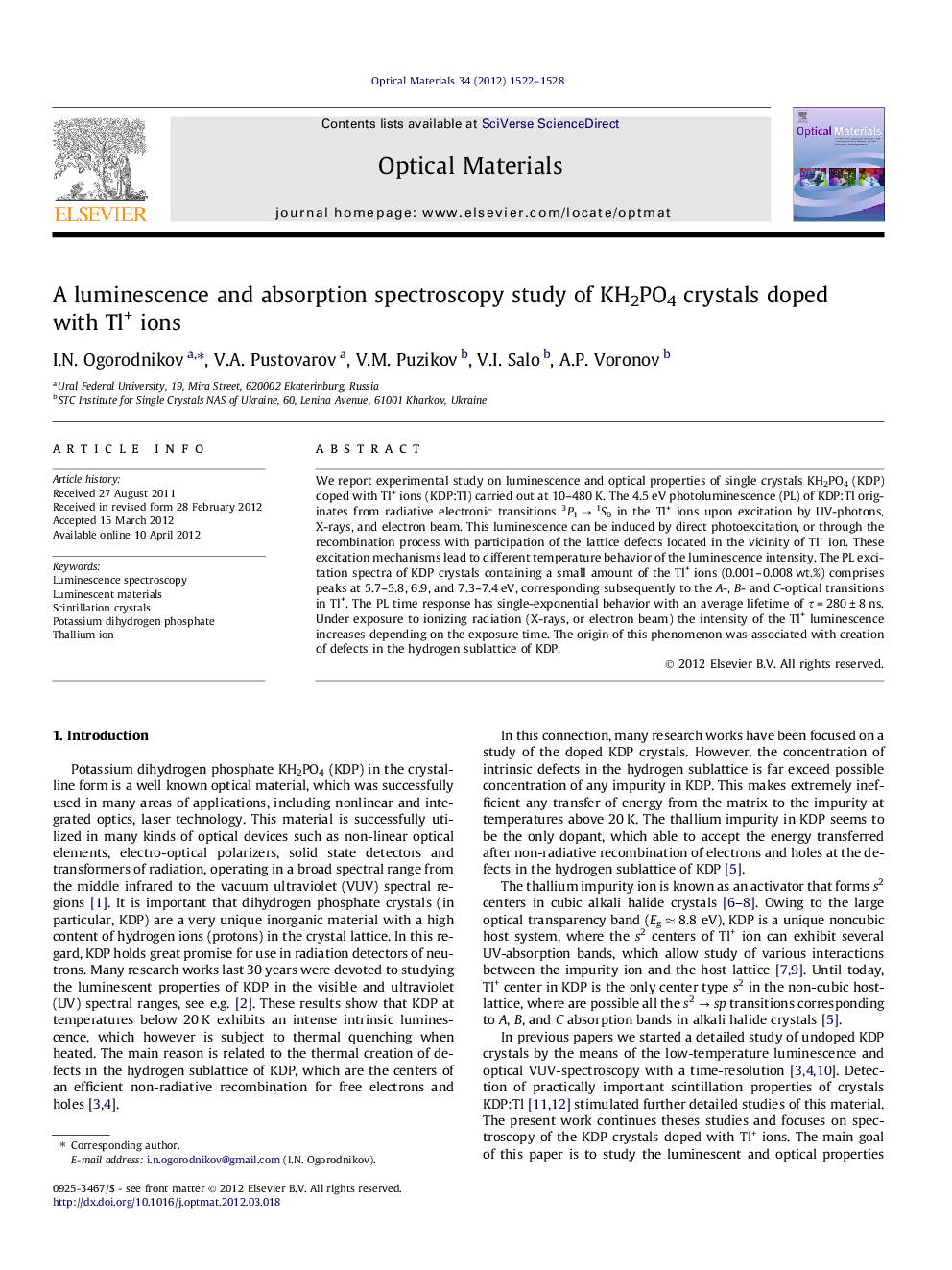| Article ID | Journal | Published Year | Pages | File Type |
|---|---|---|---|---|
| 1495694 | Optical Materials | 2012 | 7 Pages |
We report experimental study on luminescence and optical properties of single crystals KH2PO4 (KDP) doped with Tl+ ions (KDP:Tl) carried out at 10–480 K. The 4.5 eV photoluminescence (PL) of KDP:Tl originates from radiative electronic transitions 3P1 → 1S0 in the Tl+ ions upon excitation by UV-photons, X-rays, and electron beam. This luminescence can be induced by direct photoexcitation, or through the recombination process with participation of the lattice defects located in the vicinity of Tl+ ion. These excitation mechanisms lead to different temperature behavior of the luminescence intensity. The PL excitation spectra of KDP crystals containing a small amount of the Tl+ ions (0.001–0.008 wt.%) comprises peaks at 5.7–5.8, 6.9, and 7.3–7.4 eV, corresponding subsequently to the A-, B- and C-optical transitions in Tl+. The PL time response has single-exponential behavior with an average lifetime of τ = 280 ± 8 ns. Under exposure to ionizing radiation (X-rays, or electron beam) the intensity of the Tl+ luminescence increases depending on the exposure time. The origin of this phenomenon was associated with creation of defects in the hydrogen sublattice of KDP.
► We studied luminescence of KH2PO4:Tl upon excitation with UV, X-rays, e-beam. ► The 4.5 eV luminescence of KDP:Tl is due to 3P → 1S0 transitions in the Tl+ ion. ► The PL excitation peaks are due to A-, B- and C-optical transitions in Tl+ ion. ► The PL decay kinetics is single-exponential with lifetime of 280 ± 8 ns. ► We explain 25 times increase in PL intensity upon exposure to ionizing radiation.
